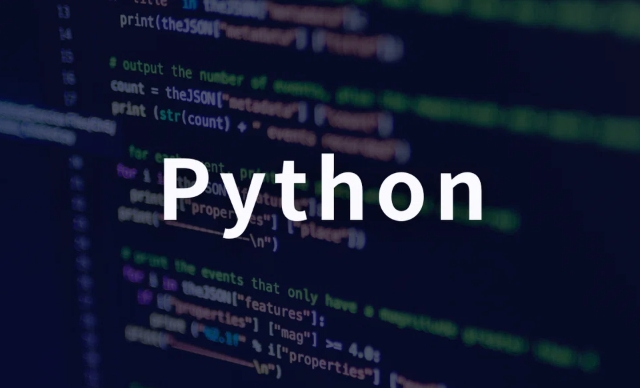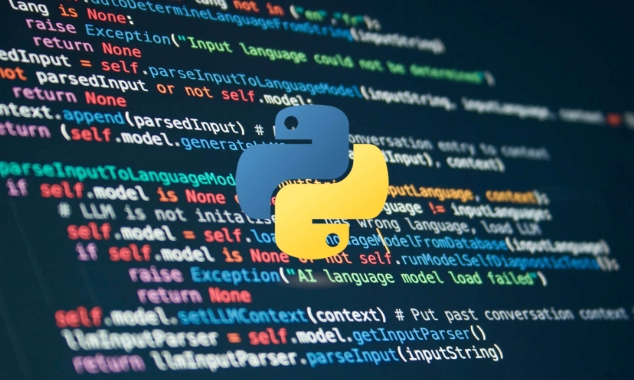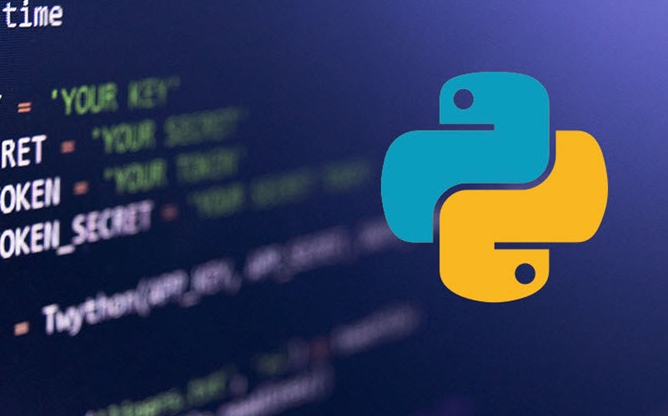Kivy is a cross-platform GUI development library suitable for writing applications in Python that can run on Windows, macOS, Linux, Android and iOS. 1. It is based on OpenGL ES 2, with fast rendering speed and modern interface, especially suitable for touch screen devices; 2. It provides a variety of layout methods such as BoxLayout, GridLayout, etc., which is convenient for organizing UI elements; 3. It supports the use of kv files to separate logic and interface to improve the maintainability of large projects; 4. It can be packaged as a desktop executable file through PyInstaller, or build an Android APK using Buildozer; 5. Although the component ecosystem is not as rich as Web technology, it is lightweight and flexible enough, suitable for cross-platform GUI development needs.

Kivy is a very practical Python library, especially suitable for cross-platform GUI development. Kivy is a good choice if you want to run on Windows, macOS, Linux, Android and iOS with a set of code.

Why choose Kivy?
First, Kivy's core strength lies in its cross-platform capabilities. It is built on OpenGL ES 2, with fast interface rendering speed, suitable for developing desktop and mobile applications. Unlike Tkinter, which looks old and relies on it more as PyQt, Kivy provides modern UI controls, especially suitable for touch screen devices.
In addition, the Kivy community is active and the documentation is relatively complete. Although it is a little steep in getting started, the development efficiency is still quite high once you get familiar with it.

How to get started with Kivy?
Installing Kivy is relatively simple, it is recommended to use pip to install:
-
pip install kivy
However, it should be noted that some systems (such as macOS or Linux) may require additional dependency libraries to be installed. If you encounter problems, you can go to the official website to view the installation guide of the corresponding system.

Writing the first Kivy program is also very straightforward. You can start with a simple button interface:
from kivy.app import App
from kivy.uix.button import Button
class MyApp(App):
def build(self):
return Button(text='Click me to try')
MyApp().run()After running, a window with a button will pop up, and clicking will bring default visual feedback. This example shows the basic structure of Kivy: the App class is responsible for launching the application, and the build method returns to the main interface control.
How to organize layout and components?
Kivy provides several commonly used layout methods, such as BoxLayout, GridLayout and AnchorLayout, which can help you organize interface elements more flexibly.
For example, if you want to arrange two buttons horizontally, you can use BoxLayout:
from kivy.uix.boxlayout import BoxLayout
class MyLayout(BoxLayout):
def __init__(self, **kwargs):
super().__init__(**kwargs)
self.add_widget(Button(text='left'))
self.add_widget(Button(text='right'))Then put this layout into your app and you will see two side-by-side buttons.
In addition to layout, Kivy also supports many controls, such as Label, TextInput, Image, etc. You can define the UI through a kv file, or you can create it directly in Python code. For small projects, it is more convenient to write code directly; it is recommended to use kv to separate logic and interfaces for large projects.
How to package it into an executable file or APK?
Packaging is a concern for many people. Kivy supports packaging programs into executable files for Windows, macOS, and Linux, or can also be packaged into Android APK.
- For desktop, it is recommended to use PyInstaller :
- Install PyInstaller:
pip install pyinstaller - Packaging command:
pyinstaller --onefile your_app.py
- Install PyInstaller:
Packaged programs can usually be run directly, but you should pay attention to resource path issues, especially external files such as pictures and fonts that need to be processed manually.
- For Android, you can use the Buildozer tool:
- Install Buildozer:
pip install buildozer - Initialize configuration:
buildozer init - After modifying the spec file, run
buildozer -v android debug deploy run logcatto generate the APK and install it on your phone to debug
- Install Buildozer:
Various dependency problems may be encountered during the packaging process. It is recommended to refer to official documents or community experience sharing.
Basically that's it. Although Kivy does not have a rich component ecosystem like Web technology, it is lightweight and flexible enough, especially suitable for developers who want to use Python as a cross-platform GUI application.
The above is the detailed content of Cross-Platform GUI Development with Python Kivy. For more information, please follow other related articles on the PHP Chinese website!

Hot AI Tools

Undress AI Tool
Undress images for free

Undresser.AI Undress
AI-powered app for creating realistic nude photos

AI Clothes Remover
Online AI tool for removing clothes from photos.

Clothoff.io
AI clothes remover

Video Face Swap
Swap faces in any video effortlessly with our completely free AI face swap tool!

Hot Article

Hot Tools

Notepad++7.3.1
Easy-to-use and free code editor

SublimeText3 Chinese version
Chinese version, very easy to use

Zend Studio 13.0.1
Powerful PHP integrated development environment

Dreamweaver CS6
Visual web development tools

SublimeText3 Mac version
God-level code editing software (SublimeText3)

Hot Topics
 Polymorphism in python classes
Jul 05, 2025 am 02:58 AM
Polymorphism in python classes
Jul 05, 2025 am 02:58 AM
Polymorphism is a core concept in Python object-oriented programming, referring to "one interface, multiple implementations", allowing for unified processing of different types of objects. 1. Polymorphism is implemented through method rewriting. Subclasses can redefine parent class methods. For example, the spoke() method of Animal class has different implementations in Dog and Cat subclasses. 2. The practical uses of polymorphism include simplifying the code structure and enhancing scalability, such as calling the draw() method uniformly in the graphical drawing program, or handling the common behavior of different characters in game development. 3. Python implementation polymorphism needs to satisfy: the parent class defines a method, and the child class overrides the method, but does not require inheritance of the same parent class. As long as the object implements the same method, this is called the "duck type". 4. Things to note include the maintenance
 Python Function Arguments and Parameters
Jul 04, 2025 am 03:26 AM
Python Function Arguments and Parameters
Jul 04, 2025 am 03:26 AM
Parameters are placeholders when defining a function, while arguments are specific values ??passed in when calling. 1. Position parameters need to be passed in order, and incorrect order will lead to errors in the result; 2. Keyword parameters are specified by parameter names, which can change the order and improve readability; 3. Default parameter values ??are assigned when defined to avoid duplicate code, but variable objects should be avoided as default values; 4. args and *kwargs can handle uncertain number of parameters and are suitable for general interfaces or decorators, but should be used with caution to maintain readability.
 Explain Python generators and iterators.
Jul 05, 2025 am 02:55 AM
Explain Python generators and iterators.
Jul 05, 2025 am 02:55 AM
Iterators are objects that implement __iter__() and __next__() methods. The generator is a simplified version of iterators, which automatically implement these methods through the yield keyword. 1. The iterator returns an element every time he calls next() and throws a StopIteration exception when there are no more elements. 2. The generator uses function definition to generate data on demand, saving memory and supporting infinite sequences. 3. Use iterators when processing existing sets, use a generator when dynamically generating big data or lazy evaluation, such as loading line by line when reading large files. Note: Iterable objects such as lists are not iterators. They need to be recreated after the iterator reaches its end, and the generator can only traverse it once.
 Python `@classmethod` decorator explained
Jul 04, 2025 am 03:26 AM
Python `@classmethod` decorator explained
Jul 04, 2025 am 03:26 AM
A class method is a method defined in Python through the @classmethod decorator. Its first parameter is the class itself (cls), which is used to access or modify the class state. It can be called through a class or instance, which affects the entire class rather than a specific instance; for example, in the Person class, the show_count() method counts the number of objects created; when defining a class method, you need to use the @classmethod decorator and name the first parameter cls, such as the change_var(new_value) method to modify class variables; the class method is different from the instance method (self parameter) and static method (no automatic parameters), and is suitable for factory methods, alternative constructors, and management of class variables. Common uses include:
 How to handle API authentication in Python
Jul 13, 2025 am 02:22 AM
How to handle API authentication in Python
Jul 13, 2025 am 02:22 AM
The key to dealing with API authentication is to understand and use the authentication method correctly. 1. APIKey is the simplest authentication method, usually placed in the request header or URL parameters; 2. BasicAuth uses username and password for Base64 encoding transmission, which is suitable for internal systems; 3. OAuth2 needs to obtain the token first through client_id and client_secret, and then bring the BearerToken in the request header; 4. In order to deal with the token expiration, the token management class can be encapsulated and automatically refreshed the token; in short, selecting the appropriate method according to the document and safely storing the key information is the key.
 What are Python magic methods or dunder methods?
Jul 04, 2025 am 03:20 AM
What are Python magic methods or dunder methods?
Jul 04, 2025 am 03:20 AM
Python's magicmethods (or dunder methods) are special methods used to define the behavior of objects, which start and end with a double underscore. 1. They enable objects to respond to built-in operations, such as addition, comparison, string representation, etc.; 2. Common use cases include object initialization and representation (__init__, __repr__, __str__), arithmetic operations (__add__, __sub__, __mul__) and comparison operations (__eq__, ___lt__); 3. When using it, make sure that their behavior meets expectations. For example, __repr__ should return expressions of refactorable objects, and arithmetic methods should return new instances; 4. Overuse or confusing things should be avoided.
 How does Python memory management work?
Jul 04, 2025 am 03:26 AM
How does Python memory management work?
Jul 04, 2025 am 03:26 AM
Pythonmanagesmemoryautomaticallyusingreferencecountingandagarbagecollector.Referencecountingtrackshowmanyvariablesrefertoanobject,andwhenthecountreacheszero,thememoryisfreed.However,itcannothandlecircularreferences,wheretwoobjectsrefertoeachotherbuta
 Python `@property` decorator
Jul 04, 2025 am 03:28 AM
Python `@property` decorator
Jul 04, 2025 am 03:28 AM
@property is a decorator in Python used to masquerade methods as properties, allowing logical judgments or dynamic calculation of values ??when accessing properties. 1. It defines the getter method through the @property decorator, so that the outside calls the method like accessing attributes; 2. It can control the assignment behavior with .setter, such as the validity of the check value, if the .setter is not defined, it is read-only attribute; 3. It is suitable for scenes such as property assignment verification, dynamic generation of attribute values, and hiding internal implementation details; 4. When using it, please note that the attribute name is different from the private variable name to avoid dead loops, and is suitable for lightweight operations; 5. In the example, the Circle class restricts radius non-negative, and the Person class dynamically generates full_name attribute






